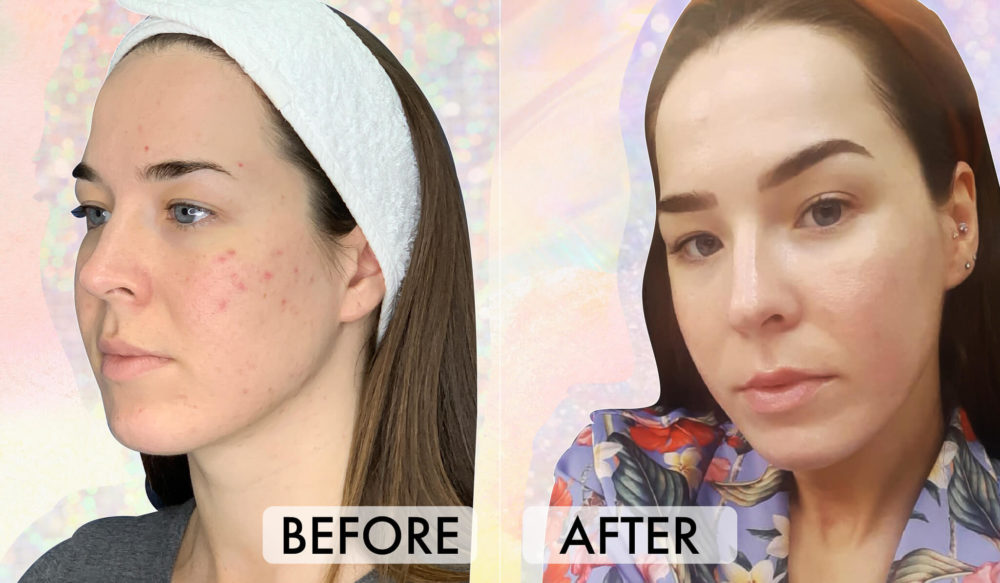If You Want To Look Like These Celebs At 50, This Is The Ingredient You Need

This is one of those mysterious ingredients that you read about everywhere, but most of us know nothing about. The magical ingredient? Retinol: It’s renowned for its incredible skincare properties, and for once, that isn’t an overstatement. Touted as the most potent non-invasive wrinkle-smoothing remedy around, this vitamin A derivative has the uncanny ability to nix pores, boost collagen, and speed cell turnover, which helps plump fine lines and fade discoloration — sometimes in as little as a month. Retinol’s Hollywood fan base include Julia Roberts, Jennifer Lopez, Halle Berry, and Sandra Bullock, and if we looked like that at 50, we’d swear by it too. Here’s everything you need to know about our new skincare bestie:
What is retinol?
Retinol is a form of vitamin A (the holy grail of vitamins for skin repair and maintenance), which our body breaks down and converts into retinoic acid. Retinoic acid has the unique ability to rejuvenate skin on a genetic level; softening fine lines, whittling away years of skin damage, and helping people achieve A-list skin by boosting collagen production. But it’s not just mature skin it can improve; if you were ever acne-prone in your youth, chances are you’ve already heard of the healing powers of retinol-based products, as they initially entered the limelight as the ultimate fix for acnegenic skin. Dermatologists noticed that not only did it wipe out their acne, but it looked even better than those with normal skin. Queue the beauty world’s obsession with retinol.
What to know about Retinol:
Retinol comes in different strengths and formulas: its most potent form, retinoic acid and Retin-A, are mostly found on prescription-only products. Retinol and retinyl are essentially weaker and have fewer side effects – these are the names you’ll find on the back of your drugstore beauty products (between 0.5% to 2% concentration). And then there’s Accutane (totally breaking the reti- trend there), an incredibly powerful, chemically enhanced variation of the vitamin, which is used to treat serious acne by prescription.
Should you be using retinol?
For aging skin: Retinol is used in most collagen-boosting beauty products and if you’re looking for something to soften signs of maturing, a retinol-infused cream will be the most effective.
For acne: Retinol can work wonders to obliterate serious acne: it reduces the oils your glands produce, increases dead cell turnover, therefore nixing pores while also curbing bacteria that can cause acne. If you make it part of a routine, it should improve your skin, but be patient; it can take more than a month to see results, in some cases. Generally, it’s best to consult a dermatologist, and they may give you a more concentrated solution (usually in cream or pill format).
For pigmentation: If you’ve got pigmentation or a little extra skin damage, speak to your GP about a retinol cream. You can work your way up the reti-ladder to Retin-A as your skin gets used to it.
Check out our fave drugstore retinol here – it costs less than $13!!
So, what’s the catch?
Retinol and all its chemical cousins are sensitive to sunlight. This means your skin won’t tolerate the sun as well as usual, so try to use your retinol products at night and always use SPF 30 if you’re using any retinol based face creams. If you’re cautious, you can try Rosehip oil, a natural alternative to retinol that’s packed with vitamin A. Check out our guide to Rosehip oil here. Retin-A is known to cause red, swollen faces from time to time (just like a chemical peel would), so keep a soothing moisturizer close. Stronger creams can cause inflammation, so you should use retinol creams sparingly, to begin with, and increase use as your skin becomes more familiar with the formula.
How to use retinol:
From rich moisturizers and serums to oils and peels, there’re hundreds of formulas that will give your skin a hit of retinol. If you want to try a new retinol-based serum or cream, check the labels for products with at least 0.1% retinol, although a concentration of retinol between 0.5% and 2% will make a bigger difference. If you’re starting out on retinol, look for products that have pro-retinols (like: retinyl palmitate, retinyl acetate, and retinyl linoleate), which are the mildest of the group. If you feel you need something stronger go to your dermatologist and ask about being prescribed other ‘retis’ in the family. A brief prescription of retinoic acid or Retin-A can plump up tired skin and soften fine lines – yes, please!























Leave a comment